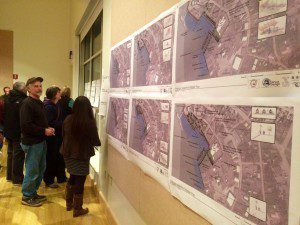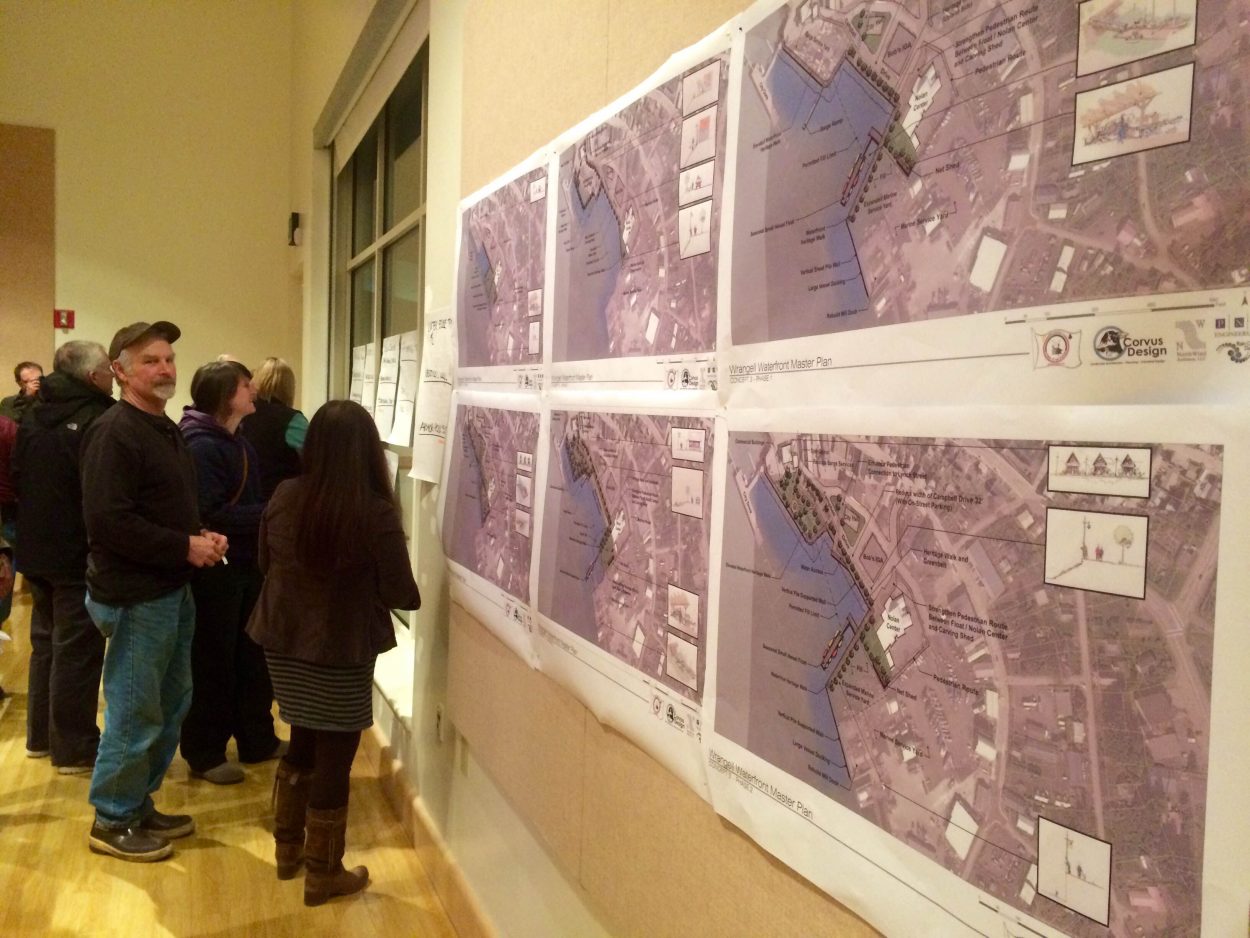
Wrangell residents examine options for Wrangell’s Waterfront Master Plan at the Nolan Center Monday, Feb. 23, 2015.
A team of architects and engineers tasked with creating a master plan for Wrangell’s downtown waterfront returned Monday with three refined design concepts.
The potential plans for the space between City Dock and the Marine Service Center are a mix of green space, boat yard expansion, boardwalks, beach access and small buildings for the tourism industry.
Corvus Design incorporated ideas from the community to narrow it down from eight designs presented to Wrangell residents at a meeting last month. The design team also produced cost estimates for the proposed plans.
Two options would each cost about $15 million. That includes construction, planning and permitting costs.
The third option would cost $35 million. The extra $20 million would go toward a 2.7-acre expansion of the boat yard.
Wrangell Economic Development Director Carol Rushmore said she is focusing on the smaller pieces that make up each of the multimillion-dollar plans.
“It’s not necessarily Phase One, Phase Two. It’s maybe going to be Phase One through Ten. And what can we do in realistic, financially viable components? So some of the prices, yes, surprised me. Some of the others were less than I had thought they were going to be. So I think it’s really trying to figure out what our priorities are, what we would like to see in the long term, but what we can do in short, incremental pieces,” Rushmore said.
The Waterfront Master Plan that results from this process is meant to be a long-term plan. At the meeting, residents discussed design implications for 15, 25 and 40 years from now.
But some residents question whether the project could get fully funded, especially considering Alaska’s major budget deficit.
Stikine Inn owner Bill Goodale said private enterprise could partner with government to make the project financially viable.
“The private enterprise is the stakeholders,” Goodale said. “And what they do is come in, work with the government and agree to put up so much money to help purchase things, develop properties and put in different types of economic engines.”
Goodale said this kind of partnership would make the project more likely to receive government funding.
“When they see a cohesive group working together, then it becomes a viable project. Then you have stakeholders in your community that have a real interest to drive the economy without relying solely on the government,” Goodale said. “And then the benefit to the government is, we get an economy. You put the property in private hands, you get the property taxes, you get the sales tax, and you bring in more industry.”
The waterfront planning team will be at the Nolan Center working on designs through Wednesday. They will hold another meeting Wednesday at 6:30 p.m. for the public to review refined design concepts.












